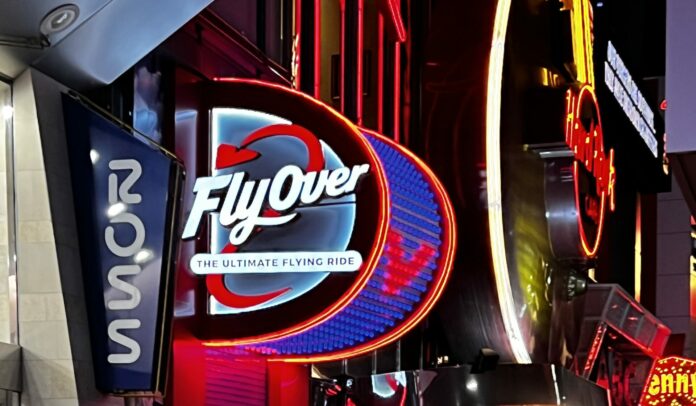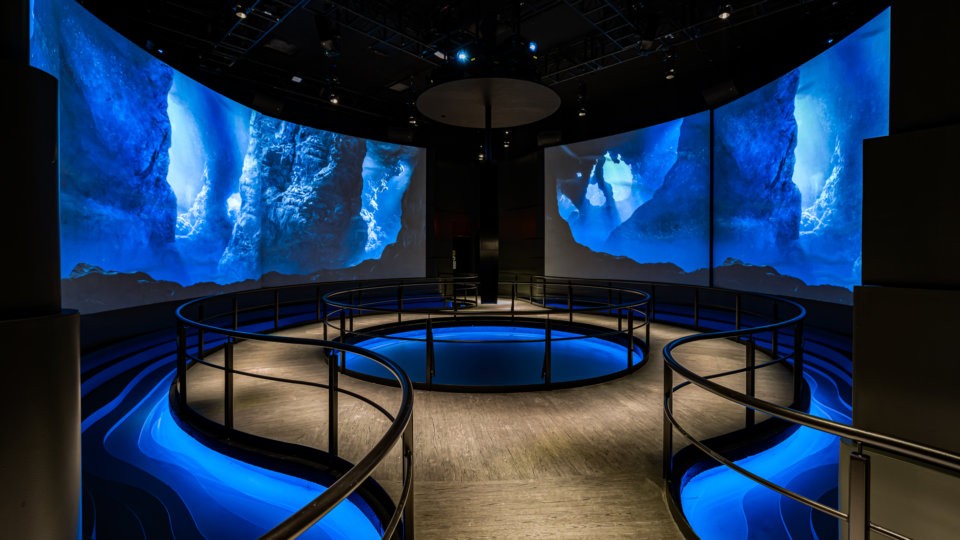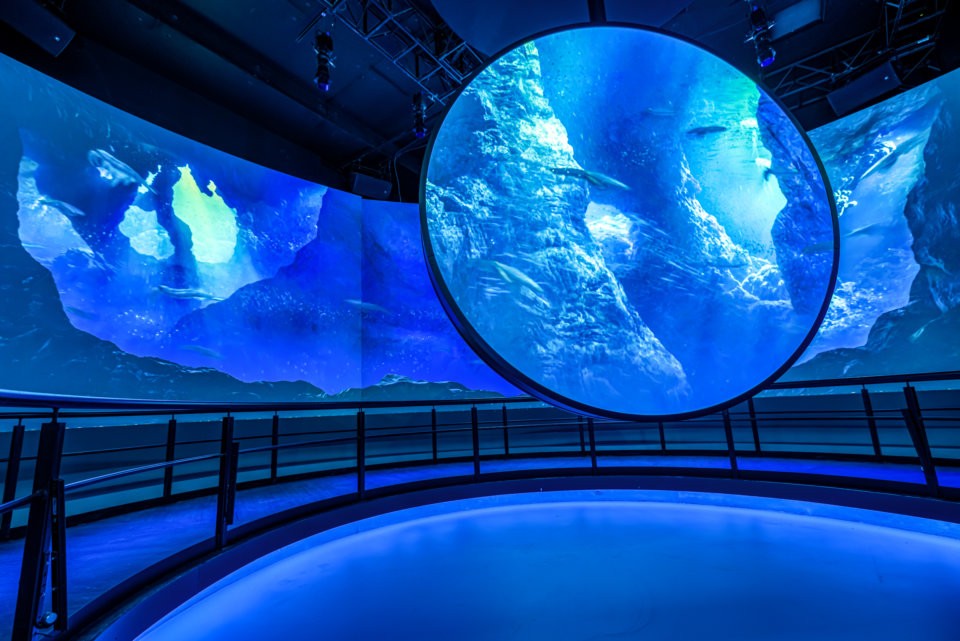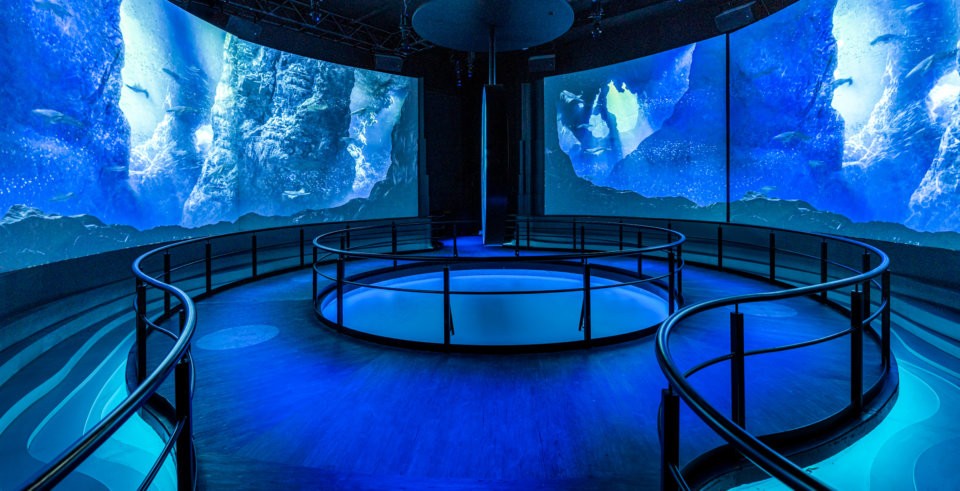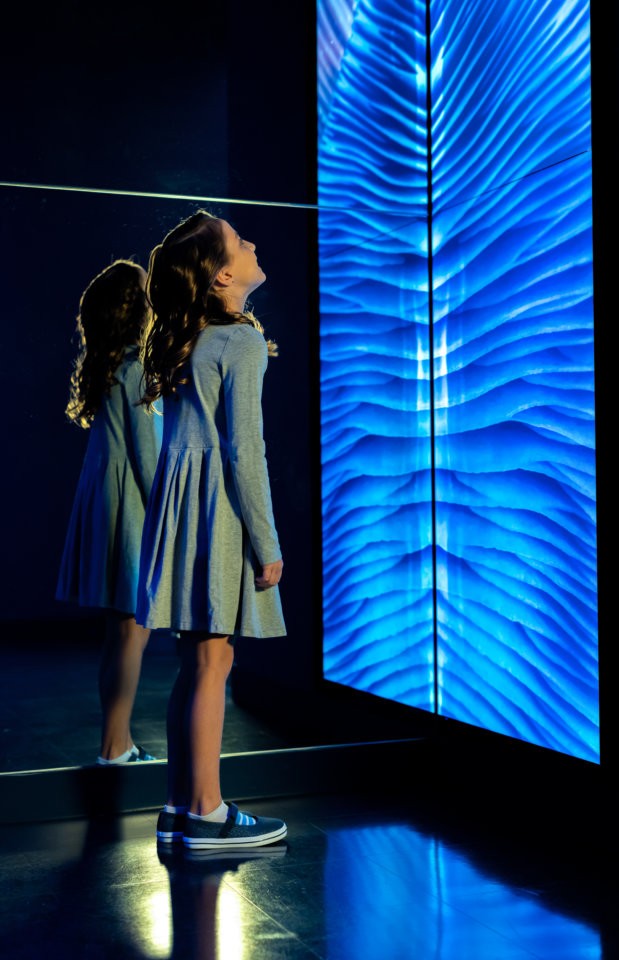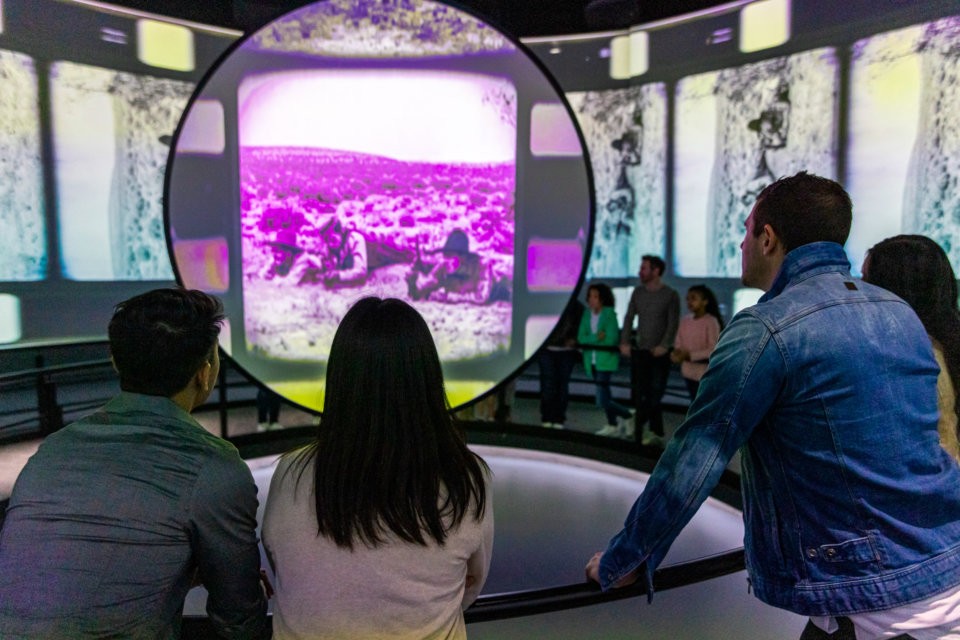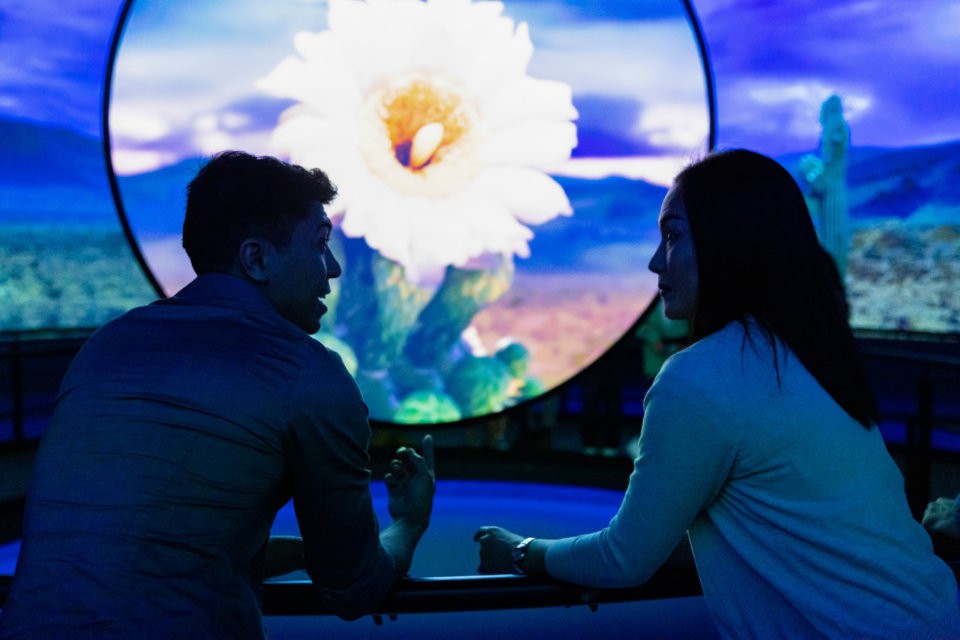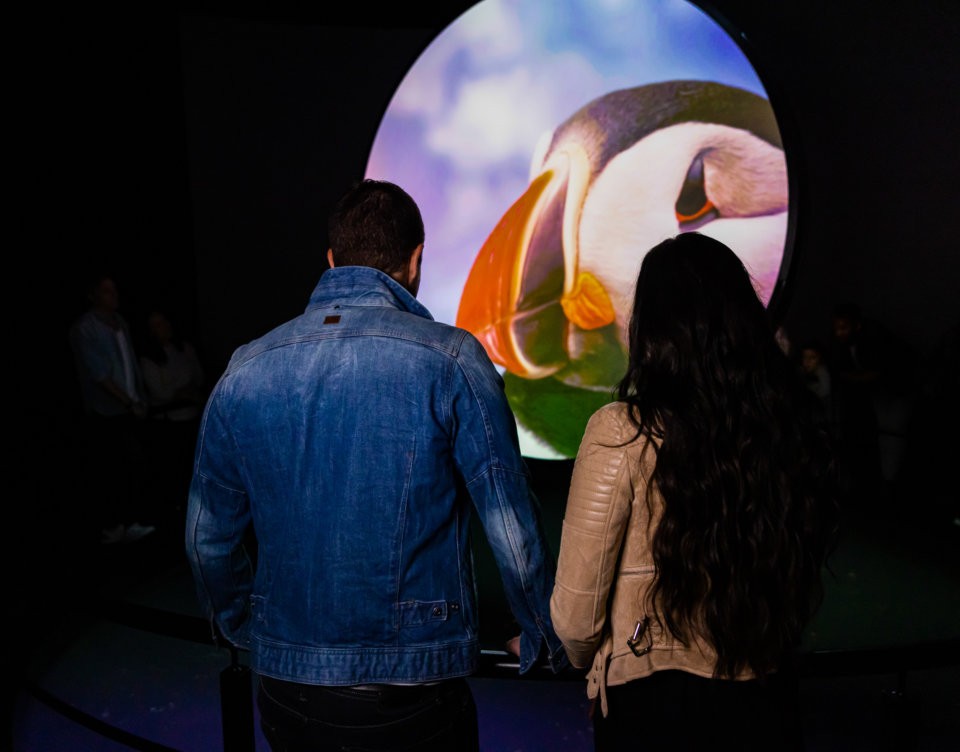By Joe Kleiman
Pursuit builds its brand in Las Vegas
FlyOver Las Vegas is not only a state-of-the-art flying theater experience in the entertainment capital of the world; it also represents an emerging breed of standalone attraction.
Open since September 2021, FlyOver Las Vegas is the latest in the FlyOver series of attractions that have delivered a string of successes for tourism and leisure company Pursuit. A FlyOver attraction immerses guests in an audiovisual environment and takes them on a simulated, aerial journey, through the combination of a half-dome shaped screen and motion seats that suspend them with feet dangling, plus other effects such as wind, lighting, scents, and mist. Each is in a destination location, designed to capture the vibe of the city and region.
It began in 2013 with FlyOver Canada in Vancouver, which in 2016 was acquired by Pursuit (at that time, the Viad Travel and Recreation Group) with the intention to expand brand into new markets. Vancouver was followed by FlyOver America at Minnesota’s Mall of America and FlyOver Iceland in Reykjavik. The Vancouver, Reykjavik, and Las Vegas locations are fully owned-and-operated venues, while the FlyOver location at Mall of America is operated by a third-party licensee.
Designed for success
Complementing Pursuit’s operational acumen and innovative business model is the world-class creative team brought together to design and implement each FlyOver attraction – a roster of distinguished filmmakers and animators, sound designers, composers, AV integrators, and technology firms. Within the themed entertainment industry, each is a recognized specialist and leader in their field with a portfolio of acclaimed projects and numerous awards.
Leading the external creative team is Rick Rothschild, Founder and Chief Creative Officer of FAR Out! Creative Direction, who has served as Creative Director on all the FlyOver attractions to date. During his time as a Disney Imagineer, Rothschild was Creative Director on “Soarin’ Over California,” the 2001 attraction that gave rise to the flying theater genre (the one that started it all!) He continues to consult on a number of high-profile, media-based attractions worldwide. On Pursuit’s internal team, Rothschild interfaces with Eric Sambell, FlyOver’s Global Director of Construction and Entertainment Technology, who has overseen the technical side of FlyOver projects since the initial Vancouver location.
Core to any flying experience is a motion theater designed and engineered to uplift and exhilarate a broad, multi-generational audience. Taiwan-based Brogent Technologies Inc. has provided motion bases to all four: Its next generation i-Ride flying theater technology provides a full six axes of movement to turn guests into delighted passengers gliding, swooping and soaring over and through the projected environment.
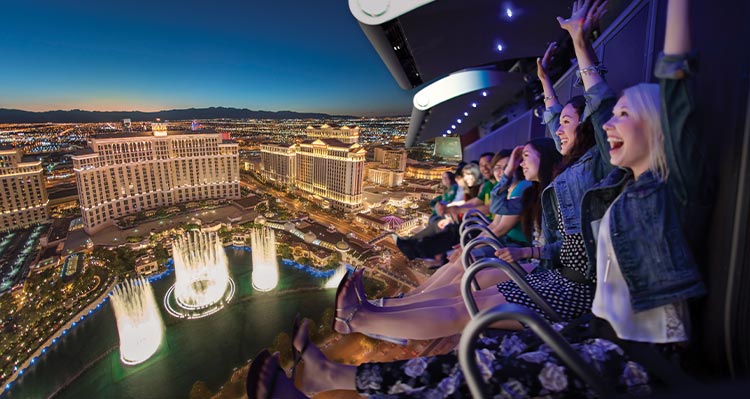
The AV integrator for the ride portion of the attraction was Austria-based Kraftwerk Living Technologies (KLT), a key supplier to projects in theme parks, museums, and attractions worldwide. “At KLT, we concentrate on the presentation of the content for the ride,” says Kevin Murphy, the company’s Senior VP of Sales and Business Development. “We concentrate on the AV and the screen, making sure they work well together and that everything is transparent. We worked closely with Eric and his design team and with Rick on the creative end to make that happen for FlyOver.”
FlyOver Las Vegas marks the second time KLT has been part of Pursuit’s FlyOver team (following FlyOver Iceland). The company has a strong track record supplying customized systems for unique rides and attractions including flying theaters. “Since the popular Voletarium at Germany’s Europa-Park [see “Uniquely European,” InPark Magazine Issue #69], we’ve worked on a total of fifteen flying theater auditoriums over the past few years,” says Murphy. “Each one is different and requires a unique approach.” The company was recently honored with a 2022 Inavation Award for its work on the Kingdom of Saudi Arabia pavilion at Expo 2020 Dubai.
Moment Factory (Montreal) is another specialist that reprised its role on the FlyOver team for the Las Vegas installation, working with Rothschild in designing the preshow experiences. At its heart, Moment Factory is an international multimedia studio with a full range of production expertise under one roof. Their projects are multidisciplinary in nature, utilizing live action, animation, graphics, lighting, and physical elements. The company has created experiences worldwide, including for various theme parks, museums, airports, retail outlets, and concerts. Most recently, Moment Factory transformed Madison Square Gardens into a “deep-sea dreamscape,” where giant drones shaped like dolphins and a whale “swam” feet above the audience during an Earth Day concert by the rock band Phish. The company has collaborated with Rothschild on the preshows for all Pursuit-owned FlyOver attractions since Vancouver.
Vegas trends
The signature experience of FlyOver Vegas, “The Real Wild West,” shows how the region is continuously changing and adapting. Like the wider Western United States, Vegas continually evolves to reflect changing markets. It has many nicknames, but from an industry point of view it might well be called The City That Never Stops Planning and Rebuilding, or The Eternal Entertainment Laboratory – a place of great creative opportunity and a proving ground for fresh approaches.
Reflecting urban travel destinations such as Hollywood Boulevard and San Francisco’s Fisherman’s Wharf, The Strip has become very pedestrian-friendly. Whereas in the past an attraction of this kind might be tucked away inside a casino, today the entrance to FlyOver Vegas sits directly on the Las Vegas Strip – a separate experience outside the framework of a casino, and a model to watch and learn from.
Motion simulation attractions first came to Las Vegas in 1990 as part of a concerted effort to broaden the city’s market appeal with more family-friendly options in entertainment as well as retail. This strategy led to a number of innovative and even influential and trend-setting simulator attractions in resorts either on or near the Strip, such as Luxor’s “Search for the Obelisk,” Caesar’s IMAX 3D “Race for Atlantis,” and “Star Trek: The Experience” at the Las Vegas Hilton. These high-budget projects were all positioned as tentpole attractions, with the intent to pull parents into casinos while their kids headed towards the rides. FlyOver, the first major simulation attraction in Las Vegas in two decades, takes this trend in a new direction, serving a broader demographic with less intensity and more ambience, exhilaration and storytelling.
Entry and deceleration
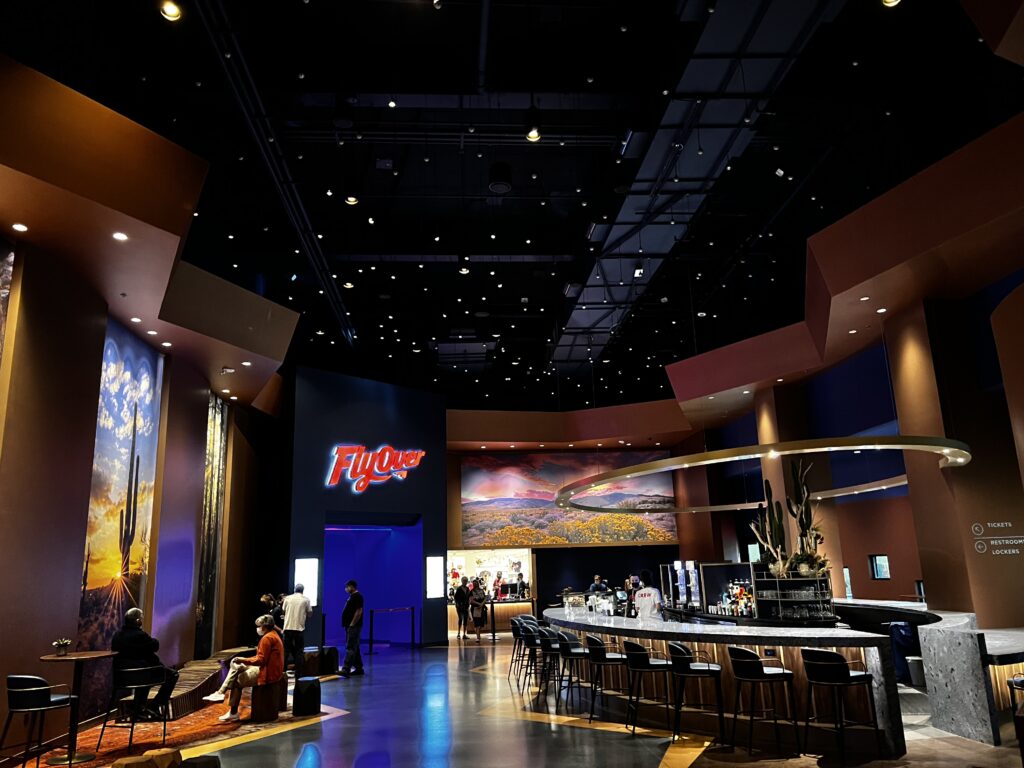
While the exterior of the attraction screams “Las Vegas Strip excitement,” guests will find the interior more tranquil. Once inside and past the ticket counter, guests enter a “deceleration zone,” with LED mood lighting, digital panels, and calming music, departing from the hustle and bustle of the Strip. This zone repurposes the area connecting two former retail spaces – a shoe store and a multiplex cinema – that were reconfigured to house FlyOver. According to Julien Demers-Arsenault, Moment Factory’s Multimedia Director on the project, “the idea is to take the guest from the noise and steel and concrete of Las Vegas to a more relaxing place. Inside the hall are kaleidoscopic images of nature – flowers, streams, and more.” Throughout the hall and the preshow areas, an ambient soundtrack plays, designed by Oscar winning sound editor Sylvian Bellemare (“Arrival,” 2017). Following its successful implementation in FlyOver Iceland [see “Visualization Vectors,” InPark Magazine Issue #80] Pursuit selected Smart Monkeys’ ISAAC platform to control the preshows and house management.
Retail, refreshments and photo ops are all part of the package and are presented with a Western motif. At the center of the lobby sits the Lost Cactus bar, which serves libations themed to the attraction’s signature show.
Preshow and authenticity
The flight itself is only half of the FlyOver experience. “Every aspect of FlyOver is about getting the guest ready to take flight – both physically and emotionally,” says Lisa Adams, President of Flyover Attractions for Pursuit. “We take an anthropological deep dive. We connect to the senses, offering a sense of discovery. Throughout the experience we have moments of deceleration, then we tell the story of the land through the preshow, giving our guests an understanding of where they’re going to fly.”
FlyOver Las Vegas takes guests through two preshow rooms, followed by the main event (the simulated flight) The entire experience lasts an average of 25 minutes. In the first preshow theater, guests are separated into boarding groups while viewing animated vignettes of locations to be visited during the flight. Moment Factory’s Demers-Arsenault shares that the images were based on the title sequences of classic Western films. The second preshow room sets up the historical background and context of the American West, evoking canyon terrain. It features a circular screen suspended in the middle of the room, surrounded by six floor-to-ceiling screens on the exterior walls of the space with topographical features at their base, creating a 360-degree space. “By utilizing three separate floor-to-ceiling screens on each side of the room, we could concentrate on the experience without worrying about image blending,” says Demers-Arsenault. Recesses in the floor feature LED lighting choreographed with the action on screen.
“We knew we wanted a bigger story than just the city,” says Rothschild, whose credits also include Epcot’s pivotal history presentation, The American Adventure. “We went to a map, put a pin in Vegas and drew a big circle to determine our audience that was within a day’s drive, about a 500-mile radius. When we did that, we ended up with most of the American West. We began thinking about what that provides as a storyline, and what the relevance of Vegas is in context to this greater area.”
The main preshow media begins with the audience submerged in an ancient sea. “We wanted to surprise the guest,” says Demers-Arsenault. “They are expecting the Wild West, but instead enter into a prehistoric ocean.” As the preshow progresses in time, the style of animation changes to match the era.
“It was an appropriate start to the geological history of the West, as Las Vegas was once under an ancient ocean,” says Rothschild. “As the preshow progresses, we move from natural factors to human and cultural factors. We start with Indigenous people, who are also featured during the ride itself, while not ignoring the eventual subjugation that one culture places on another. We engaged consultants to assure we were being true to history while also appropriately acknowledging sensitive subjects.”
Creating the best AV experience
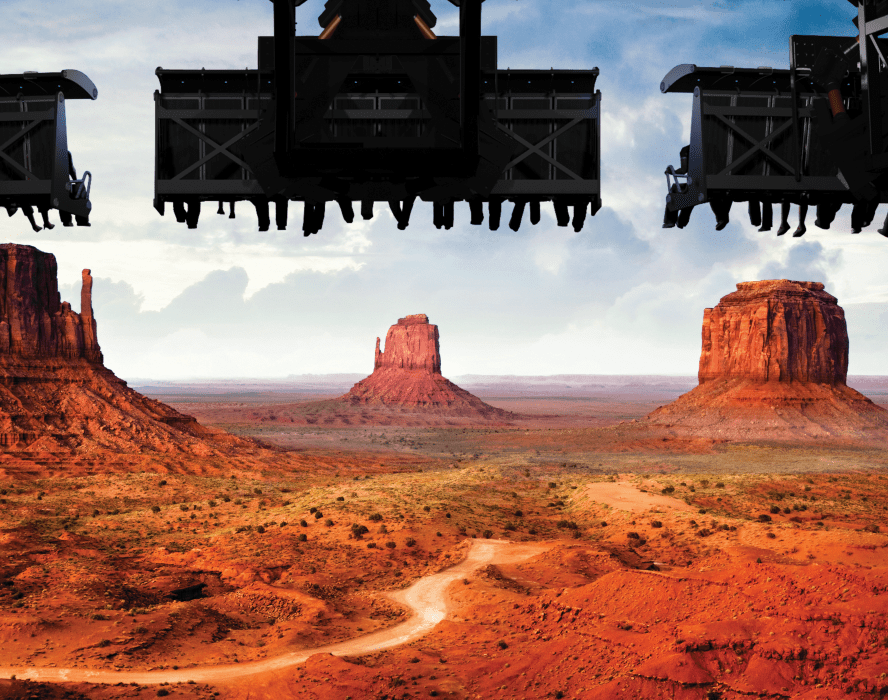
FlyOver Las Vegas currently houses two identical 40-seat theaters, each with a 52.5 foot diameter dome screen and its own preshow rooms, with space to add a third. It is also showing the film from the Iceland location and double feature tickets are available. According to Adams, the two theaters at FlyOver Las Vegas and the retrofit of the existing spaces cost $45 million in all.
KLT’s Kevin Murphy talked about technical goals, challenges and solutions in providing AV integration for the ride auditoriums. “We have high standards of quality. Vegas was our second FlyOver attraction after Iceland, and the AV design went through many iterations and changes in conversation with Rick, Eric and the team. When it comes to equipment, we are agnostic – we choose what’s right for the project. We chose three Christie D4K40 projectors for each theater for this project because they have the right reliability, light output, color gamut, and lenses we were looking for. A primary goal is to ensure that every guest gets the ‘best seat in the house.’ We had to take into consideration the projection angles, the screen shape, and the brightness. In the end, if we’ve done our job right, the guest receives the best audiovisual experience, but doesn’t notice the audiovisual equipment.” KLT built its show control and blending software for the projection and audio off of Brainsalt’s BSM 4K media servers.
The FlyOver Las Vegas flying theater features a 15.1 sound system, specified and installed by KLT, consisting of five top, five middle, three lower middle and two bottom speakers all behind the screen, combined with four subwoofers all from JBL. Brogent added two speakers behind each seat during the ride build.
Fly like a bird
Each theater has two floors, with two, 10-seat gondolas on each floor that are launched forward and suspended over the screen in Brogent’s recent, all-electrical upgrade of i-Ride (previous versions were hydraulic). “It’s the proven i-Ride system, which allows the 10-seat gondolas to move in six degrees of freedom (dof): heave, surge, sway, pitch, roll and yaw,” says Stefan Rothaug, Marketing & Sales at Brogent. “FlyOver Las Vegas is the first delivery of an improved, next-generation, i-Ride with all-electrical design. Guests will have the same magical flying experience, but for operators it makes maintenance and daily checks much easier.” Elemental effects, including wind, mist, and natural scents, are emitted from Brogent’s i-Ride motion base, at levels moderated to subtly complement the experience but not overwhelm it.
While Brogent has a longstanding sales and marketing relationship with Vekoma for distributing its products to theme parks, it worked directly with FlyOver on its location in Vancouver. The relationship continued after the acquisition by Pursuit. Rothschild had made a point of researching the Brogent technology and its capabilities. “I went to visit them in Taiwan and experienced their first version of a motion base created for a local theme park there,” says Rothschild. “With that experience, they were willing to redesign the ride vehicle for us to assure all of our expectations.”
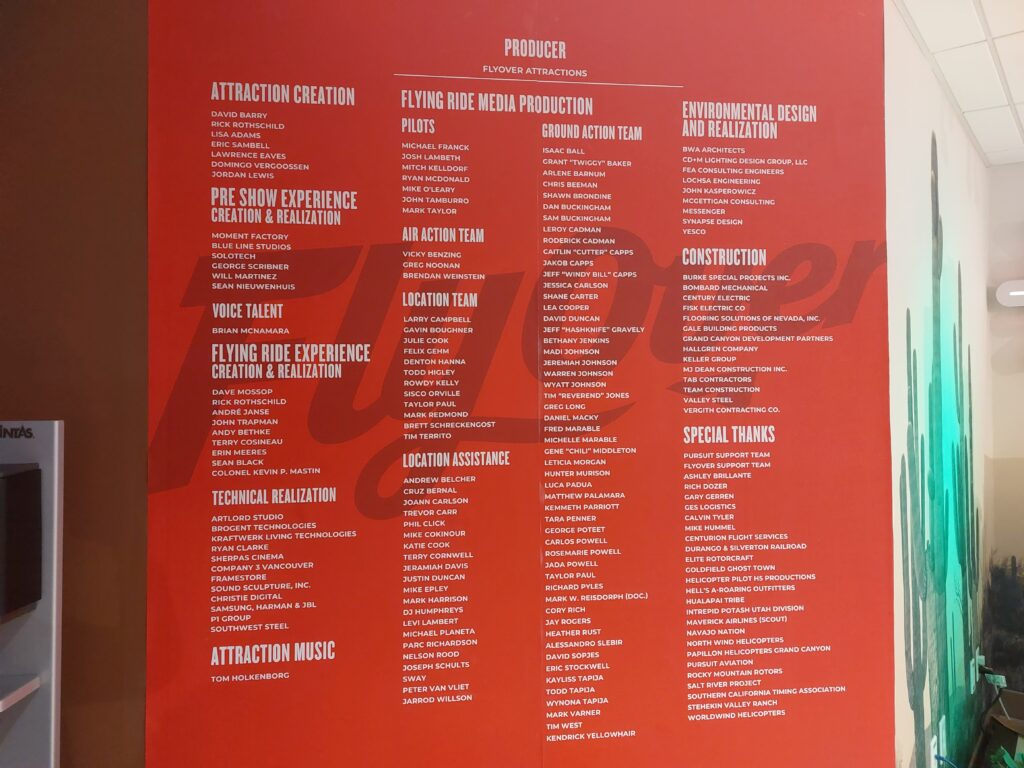
For all shoots, Rothschild flew in a helicopter with Sherpas Cinema’s Dave Mossop, director of the flying film, along with a director of photography. In one segment, the ride vehicle appears to slow in mid-flight to hang momentarily while rotating to the side. Rothschild explains that the film was conceived as if the riders were birds. “Birds can float on the thermals and while turning, subtly changing their perspective,” he says. “We’re doing the same thing using the helicopter with our camera, a RED Monstro which captures with native 8K resolution.” In another scene, riders enter a simulated barrel roll following a fighter jet. With Clemson University Professor Eric Muth, an expert on motion sickness, acting as a consultant on the project, the barrel roll was designed to deliver the sights and sensations without risk to audience comfort and safety. “It’s very important that the vehicle is programmed in sync with the image onscreen, or you get sick,” adds Rothschild.
Transitions
Rothschild discussed the workflow of FlyOver media production. “We have a lot of freedom working digitally through the pipeline from the start,” he says. “Dave would take one element in the environment, focus on it, and use digital tools to make the rest of the environment change around it. The brain accepts this as normal.” These smoother transitions allow guests to experience a single, organically connected experience, easing them in and out of scenes.
Some of the shoots for “The Real Wild West” only took a few passes, but a few were more complicated, such as a low flight through the middle of an Old West shootout in the ghost town of Goldfield, Arizona. “That was our homage to the classic Clint Eastwood western, ‘The Good, the Bad, and the Ugly,’” says Rothschild. “We shot it in about three hours, and it was one of the most sophisticated shots ever for a FlyOver film. It involved six or seven takes, with 35 performers, stuntmen, extras and animals – a nest full of classic live-action challenges!”
Sound design and safety spiel
Rothschild worked on the safety-spiel segment of the preshow with former Disney animator and Imagineer George Scribner, along with Will Martinez as animators – endeavoring to bring something new to the form. “For each new location,” he points out, “we try to bring something unexpected.” For FlyOver Las Vegas they chose a young woman as a central character. She’s accompanied on screen by two prairie dogs named Midnight and Snake Eyes. Rothschild points out that their names are Vegas ‘Easter eggs,’ being terms for the casino dice game craps.
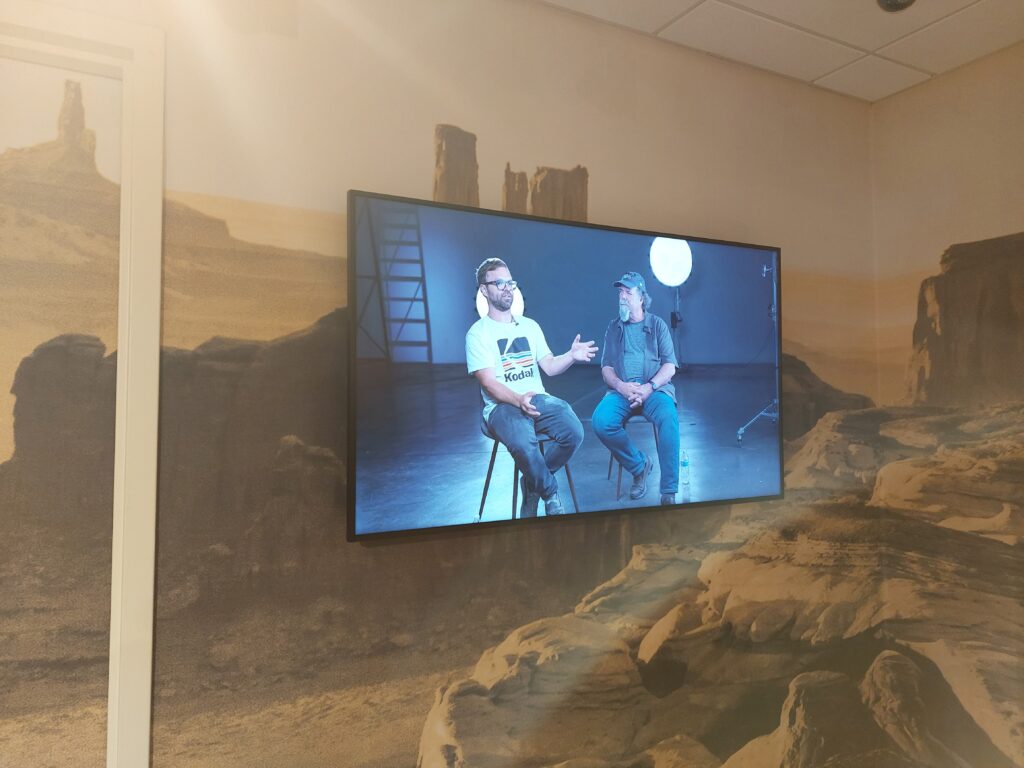
Tom Holkenborg (better known by his stage name Junkie XL) composed the attraction’s score. Sound Sculpture’s Ben Harrington (son of legendary Walt Disney Imagineering media designer Joe Harrington), created the audio for the safety spiel and the main ride experience, while long-time collaborator Craig Krueger provided the sound mix for the dome. Both Harrington and Krueger have previously worked on several major attractions at Disney parks.
Where to FlyOver?






Above: The FlyOver Las Vegas marquee lights up the Las Vegas Strip. Photos by Joe Kleiman.
As noted, unlike previous motion simulator attractions in the city, FlyOver Las Vegas does not require a walk through a casino or a journey to the back of a resort to be experienced. Rather, it is easily and directly accessed, streetside in a bustling area of the Strip. “Foot traffic was first and foremost in determining a location,” shares Adams. “The area we chose in the Showcase Mall is an area with a lot of development. There’s a new pedestrian overpass that’s advantageous to us, connecting directly to the New York New York and Park MGM hotels and the T-Mobile Arena. The popular M&M’s store is next door to us. All of our locations involve a large external presence, which showcases our brand.”
While FlyOver Las Vegas is the brand’s newest location, it is far from its last. “Our next location, Flyover Canada, between the CN Tower and the Rogers Centre in Downtown Toronto, will run $100 million and be our biggest. It was scheduled to open this year but has now been pushed back to 2024 due to delays from the pandemic. It will feature a new film on the Canadian Rockies.”
When selecting a new location, Pursuit looks at three major criteria. First, it needs to be a big tourism center. Second, international tourism has to play a big part. Third, that needs to be offset by a large domestic tourism market. is picking up,” Adams says. She expects that 80% of the Vegas location will be out-of-town domestic tourists. “People come to Vegas for concerts, events, dining, and wedding throughout the year,” she says. “And we’re also seeing quite a few Nevada locals coming in.”
Pursuit recently announced a new FlyOver location on Chicago’s iconic Navy Pier. “Our parent company operates a collection of attractions, lodges, and tours in North America and Iceland,” says Adams. “Our resorts tend to be in ecotourism areas, while the FlyOver attractions are in high foot traffic tourism centers in large cities. All of Pursuit’s operations have the same goal – we tell the story of a people and a country in spaces with accessible price points. FlyOver offers an experience of nature, culture and the feeling of flight, and lets people experience what they might not be able to in other locations.”


